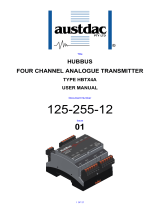
- 4 -UMC100-FBP
Universal Motor Controller
UMC100-FBP
Technical Description
FieldBusPlug / Issue: 03.2012
Using the Digital UMC Inputs ...........................................................................................................66
Control Function Transparent ...........................................................................................................69
Control Function Overload Relay ......................................................................................................71
Control Function Direct Starter (DOL) ...............................................................................................73
Control Function Reversing Starter (REV).........................................................................................76
Control Function Star-Delta Starter ..................................................................................................79
Control Function Pole-Changing Starter ..........................................................................................82
Control Function Actuator 1 - 4 ........................................................................................................85
6 Configuring the Fieldbus Communication ...........................................................................................91
Setting the Bus Address ...................................................................................................................91
Address Check when using UMC in Motor Control Centres ............................................................91
Defining the Bus Fault Reaction .......................................................................................................92
Ignore Block Parameters ..................................................................................................................93
7 Using Expansion Modules ...................................................................................................................95
Using a Digital IO Module (DX111/122) ............................................................................................95
Using a Voltage Module (VI150/155).................................................................................................96
8 The LCD Control Panel UMC100-PAN ................................................................................................ 97
Overview ...........................................................................................................................................97
Monitoring Status Information ..........................................................................................................98
The Menu Tree ..................................................................................................................................98
Adjusting Parameters .....................................................................................................................104
Starting and Stopping the Motor .................................................................................................... 106
9 Error Handling, Maintenance and Service ......................................................................................... 109
Error Handling of the UMC .............................................................................................................109
UMC100 Fault Indication ................................................................................................................ 109
Fault Messages ...............................................................................................................................109
Resetting Parameters to Factory Defaults .....................................................................................114
Resetting the Password ..................................................................................................................114
Reading, Setting and Resetting Maintenance Counters ................................................................115
DX1xx / VI15x Status Codes ..........................................................................................................116
Replacing a UMC100 ......................................................................................................................116
Replacing a DX1xx IO Module ........................................................................................................116
Replacing a VI15x IO Module .........................................................................................................116
Requesting Support ........................................................................................................................116
A1 Parameters and Data Structures on a Fieldbus ..............................................................................117
Command Data ..............................................................................................................................117
Accessing Data on PROFIBUS ....................................................................................................... 119
Accessing Data on Modbus ...........................................................................................................119
Accessing Data on DeviceNet ........................................................................................................119
Accessing Data on CANopen .........................................................................................................119
Parameter Organisation .................................................................................................................. 120





















